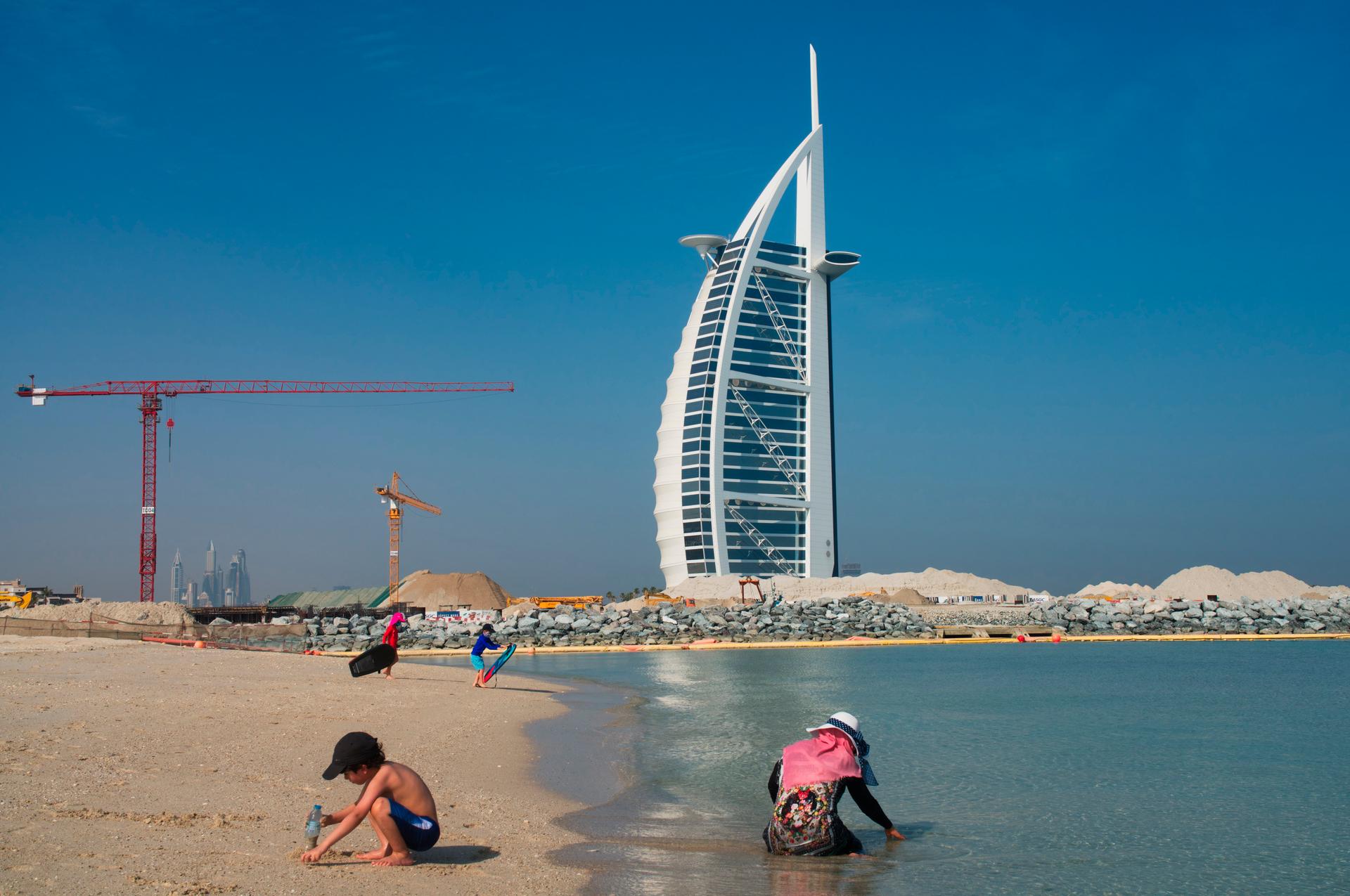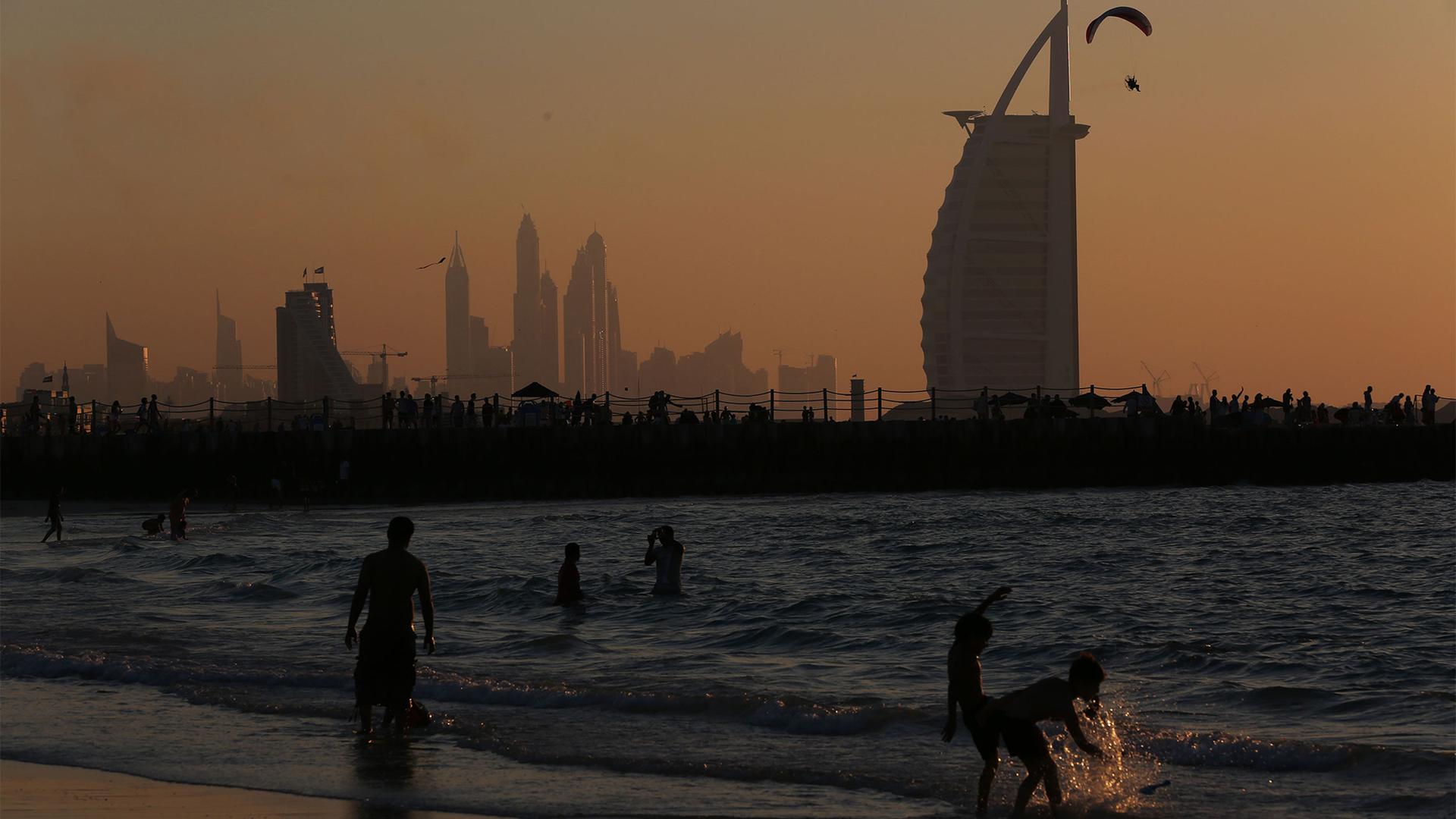It’s so hot in the middle of the day in Dubai, in the United Arab Emirates, Karis Magnin said, she would never go to Kite Beach when the sun’s out.
But by 11 p.m., the temperature drops to around 88 degrees Fahrenheit, and the humidity also decreases a little. The beach is open all night.
“It’s comfortable, and the breeze is nice,” Magnin said as she sipped her iced tea and ate bratwurst at a table near the sand, with her friend, Ashley Taylor Smith, on a recent night.
The two weren’t alone — the beach was packed, and the boardwalk was abuzz.
Scientists say 2023 was the hottest year on record, and that it was hotter than it’s been in thousands of years. Cities and towns all over the world have been affected, and many, like Dubai, have started to find ways to adapt to the hotter new reality.
In May of 2023, the municipality of Dubai designated several night beaches — open 24 hours and free to access — to make the city more attractive, improve quality of life and boost tourism, according to a government video posted on X.

In the face of the region’s extreme weather, night beaches are one way to appeal to more people, it adds.
The beaches in Dubai are uniquely equipped for the adjustment. They have floodlights, digital screens projecting safety information, late-night dining options, games, jogging areas and rides. And the lifeguards remain on duty into the wee hours of the morning to counter the risks of swimming at night.
EJ Yco, who runs the iced tea stand at Kite Beach, said he generally opens at 2 p.m., but that people don’t usually start showing up until 7 p.m. or 8 p.m. Before then, it’s just too hot and humid.
“You cannot stay outside or you’re going to burn up,” he said. “So, the people like to come at night.”
Melissa Finnecane, a behavioral scientist and also the vice president of science and innovation at the Union of Concerned Scientists, said that coastal communities all over the world have been scrambling to find ways to deal with the effects of climate change.

In Fiji, resorts have started offering more indoor activities for guests who need a break from the heat or shelter from storms; the coastal town of Montauk in New York has created a plan to relocate part of the community inland; and in the Maldives, the government has built an artificial island to make up for land lost to sea-level rise.
“We do have to think about adaptation strategies,” she said, adding, “We really are going to be struggling more and more.”
Finnecane said that the most-important consideration is still preventative measures, such as reducing carbon emissions. But mitigating the effects of climate change is not just an engineering challenge.
“Social infrastructure, meaning the places people gather to spend time and build strength as a community,” are also important, she emphasized.
Like at Kite Beach — where Magnin and Smith looked out at the gulf waters illuminated by floodlights.
“This is great,” Smith said. “It just feels really relaxed. You can make a day out of it” — or a night.
The World is an independent newsroom. We’re not funded by billionaires; instead, we rely on readers and listeners like you. As a listener, you’re a crucial part of our team and our global community. Your support is vital to running our nonprofit newsroom, and we can’t do this work without you. Will you support The World with a gift today? Donations made between now and Dec. 31 will be matched 1:1. Thanks for investing in our work!
